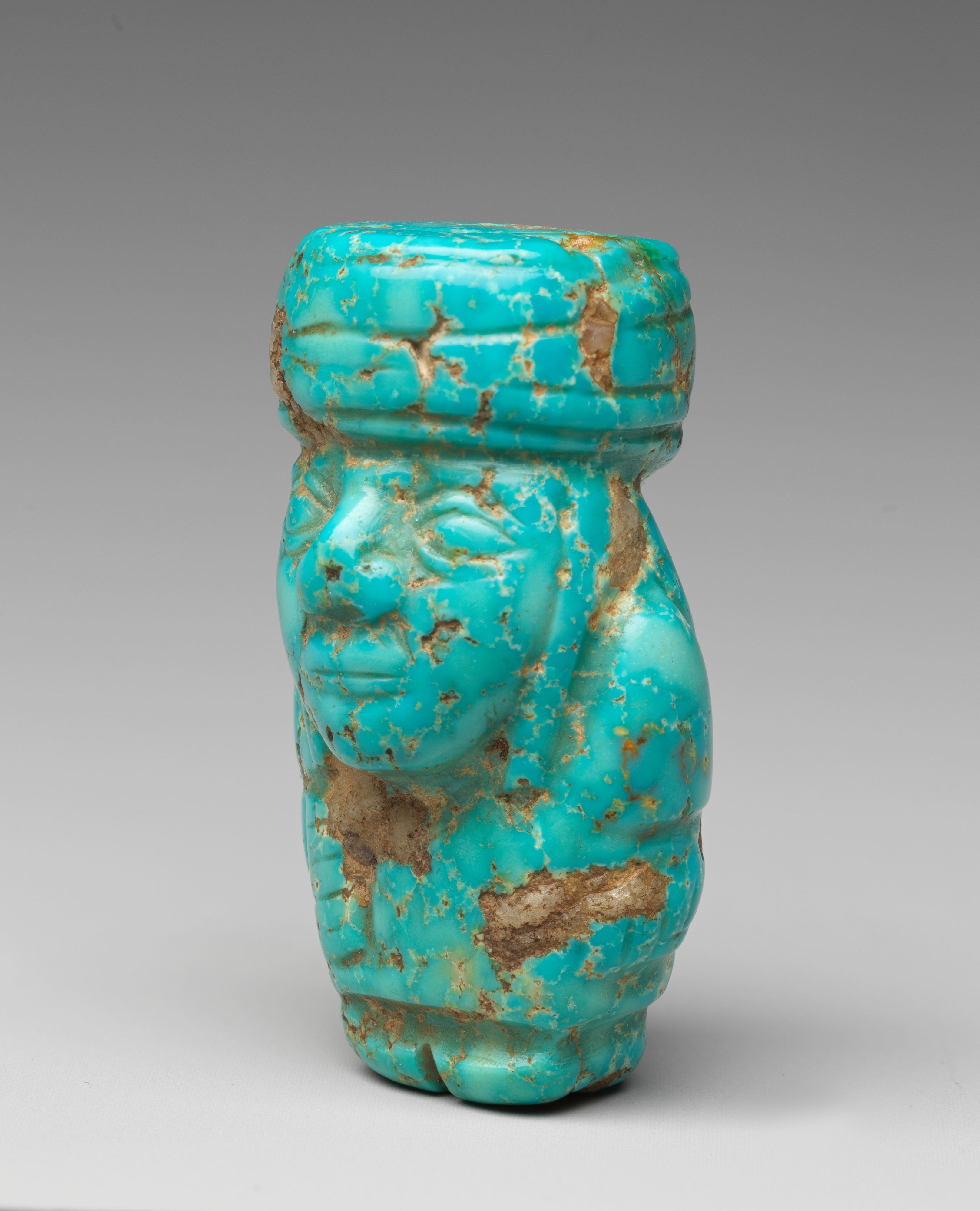Figurine
Not on view
This small turquoise figurine represents a standing male warrior with a large head—in scale, over half the size of the entire figure—with carefully carved features. The figure is shown wearing a cloth headdress, the ends of which extend down on both sides of his face. He wears a plain tunic that almost reaches his feet and in his right hand he holds a small object, perhaps a club.
Small votive figurines of stone or metal in the shape of humans and animals have been found in offerings associated with the powerful Wari Empire, a polity that thrived in the Central Andes centuries before the rise of the Inca Empire. Miniature warriors held weapons and shields, either carved as an integral part of the sculpture or attached. Three large groups of such figurines have been found at the Wari site of Pikillacta, near Cusco, Peru, likely deposited as offerings along with Spondylus shell valves and other items. The Pikillacta figurines, found in circular, stone-covered pits, or, in one case, buried near the threshold of the site’s main entrance, average 3-4 cm in height (for similar examples of this type see MMA accession numbers 1979.206.417 and 2020.386.2).
Further Reading and References
Arriola Tuni, Carlos A., and Louis D. Tesar. "The Pikillacta 2004 Eastern Gate Offering Pit." Ñawpa Pacha 31, no. 1 (2011), 1-44.
Bergh, Susan E. "Figurines." In Wari: Lords of the Ancient Andes, edited by Susan E. Bergh, et al., pp. 232-241. New York: Thames & Hudson, 2012.
Cook, Anita G. "The Stone Ancestors: Idioms of Imperial Attire and Rank among Huari Figurines." Latin American Antiquity 3, no. 4 (1992), pp. 341-64.
Isbell, William Harris, Mauricio Uribe, Anne Tiballi, and Edward P. Zegarra, eds. Images in Action: The Southern Andean Iconographic Series. Los Angeles, CA: UCLA Cotsen Institute of Archaeology Press, 2018.
This image cannot be enlarged, viewed at full screen, or downloaded.
This artwork is meant to be viewed from right to left. Scroll left to view more.



